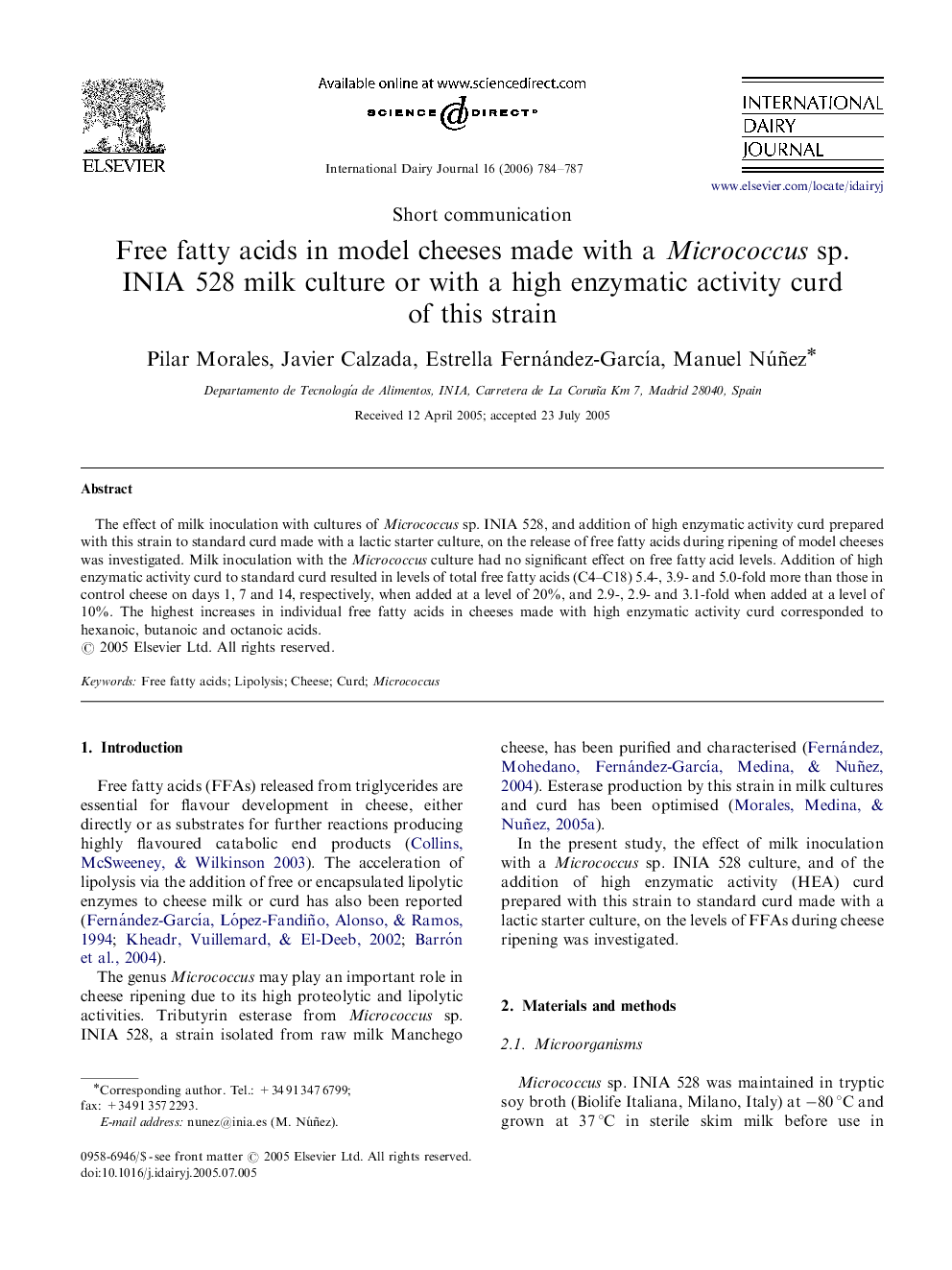| Article ID | Journal | Published Year | Pages | File Type |
|---|---|---|---|---|
| 2435849 | International Dairy Journal | 2006 | 4 Pages |
Abstract
The effect of milk inoculation with cultures of Micrococcus sp. INIA 528, and addition of high enzymatic activity curd prepared with this strain to standard curd made with a lactic starter culture, on the release of free fatty acids during ripening of model cheeses was investigated. Milk inoculation with the Micrococcus culture had no significant effect on free fatty acid levels. Addition of high enzymatic activity curd to standard curd resulted in levels of total free fatty acids (C4-C18) 5.4-, 3.9- and 5.0-fold more than those in control cheese on days 1, 7 and 14, respectively, when added at a level of 20%, and 2.9-, 2.9- and 3.1-fold when added at a level of 10%. The highest increases in individual free fatty acids in cheeses made with high enzymatic activity curd corresponded to hexanoic, butanoic and octanoic acids.
Related Topics
Life Sciences
Agricultural and Biological Sciences
Food Science
Authors
Pilar Morales, Javier Calzada, Estrella Fernández-GarcÃa, Manuel Núñez,
